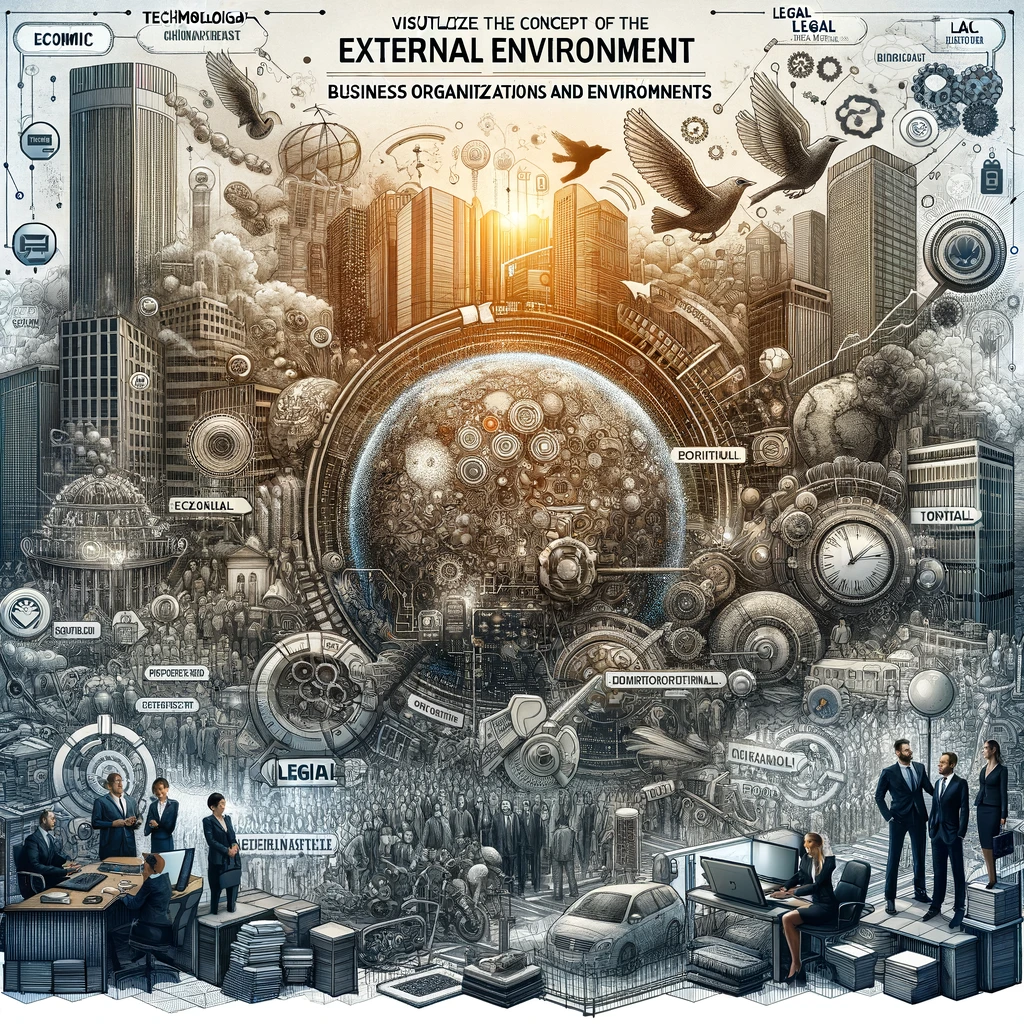Organizational structure is a critical component of any business, dictating how activities such as task allocation, coordination, and supervision are directed toward the achievement of organizational aims. It forms the backbone of an organization, determining the hierarchy of authority, the flow of information, and the framework within which the company operates. This comprehensive analysis explores the elements of organizational structure and their implications for business operations, supplemented by industry examples to provide IB Business & Management students with a thorough understanding of these concepts.
Levels of Hierarchy
Overview: The hierarchy within an organization defines the vertical layers of authority and responsibility. Each level represents a rank with specific duties, where senior managers make strategic decisions and juniors execute tasks.
Example: Walmart operates with a clear hierarchical structure, from the CEO at the top down through senior managers, store managers, department managers, and front-line employees. This hierarchy helps Walmart manage its vast global operations efficiently by delineating authority and responsibilities.
Chain of Command
Overview: The chain of command describes the official pathway that a decision follows within an organization. It typically flows from higher levels of management to lower levels, ensuring that decisions are communicated and implemented throughout the organization.
Example: In the military, the chain of command is paramount, with orders flowing from generals to soldiers. Corporations like General Electric (GE) emulate this model to ensure efficiency and clarity in communication and decision-making.
Span of Control
Overview: This refers to the number of subordinates a manager can effectively manage. A wide span of control implies fewer levels of hierarchy but requires managers to supervise a larger number of employees directly.
Example: Google is known for its relatively wide span of control, with managers overseeing large teams of employees. This structure supports Google’s emphasis on innovation and agility by reducing bureaucratic delays in decision-making.
Delegation
Overview: Delegation involves a manager entrusting tasks or decisions to subordinates. It’s essential for efficiency and employee development but requires trust and clear communication of expectations.
Example: Zara, a part of Inditex, practices delegation extensively within its operations, allowing store managers significant autonomy in decisions such as inventory management and display setups to align offerings with local customer preferences.
Centralisation vs Decentralisation
Overview: Centralisation refers to decision-making authority being concentrated at the top levels of the organizational hierarchy, while decentralisation distributes decision-making closer to the point of action or service delivery.
Example: Amazon exhibits a mix of centralisation and decentralisation. Strategic decisions, especially regarding technology and overall business direction, are centralized, whereas operational decisions, like those in fulfillment centers, are decentralized to allow for responsiveness and efficiency.
Bureaucracy
Overview: A bureaucratic organization emphasizes strict procedures, rules, and hierarchies to ensure consistency and control. However, excessive bureaucracy can stifle innovation and flexibility.
Example: Government agencies often exemplify bureaucratic structures, with stringent adherence to rules and procedures. In contrast, companies like Spotify strive to minimize bureaucracy to maintain agility and foster a culture of innovation.
De-layering
Overview: De-layering involves removing one or more levels of hierarchy from the organizational structure. It aims to flatten the organization, making it less bureaucratic and more responsive to market changes.
Example: HP Inc. underwent significant de-layering as part of its restructuring efforts, aiming to reduce complexity, speed up decision-making, and lower costs by cutting down on management layers.
Types of organisational structures
Introduction
- Define organizational structure and its significance in business management.
- Briefly introduce the types of organizational structures: Tall, Flat, by Hierarchy, by Function, by Product, by Region.
Tall Organizational Structure
- Definition and Characteristics: Highlight its features, such as many levels of hierarchy, narrow spans of control, and centralised decision-making.
- Pros and Cons: Discuss the benefits, such as clear chain of command, and the drawbacks, like slow decision-making process.
- Industry Example: Consider multinational corporations or large-scale enterprises like traditional manufacturing firms. Detail how such a structure supports or hinders their operations.
Flat Organizational Structure
- Definition and Characteristics: Explain its fewer levels of hierarchy and wider spans of control.
- Pros and Cons: Cover the faster decision-making process and potential for less supervision and control.
- Industry Example: Look into startups or small to medium enterprises (SMEs) in innovative sectors like technology. Illustrate how this structure fosters agility and innovation.
Organizational Structure by Hierarchy
- Explanation: Define and explain its traditional approach, focusing on the chain of command from senior to junior levels.
- Application in Businesses: Discuss its suitability for businesses with clear functional areas or those requiring strict oversight.
Organizational Structure by Function
- Definition: Clarify how it groups employees based on their functions or departments.
- Advantages and Application: Explain how it enhances departmental efficiency and coordination, suitable for large organizations with distinct specialized functions.
Organizational Structure by Product
- Explanation: Describe how businesses are divided based on product lines.
- Benefits and Drawbacks: Discuss the focus on product management and potential silos between product divisions.
- Industry Example: Delve into conglomerates or multinational companies with diverse product ranges, like Procter & Gamble.
Organizational Structure by Region
- Definition and Reasoning: Explain the division based on geographic regions.
- Pros and Cons: Highlight the local market focus versus potential duplication of functions.
- Industry Example: Examine global retail chains or service providers, illustrating how regional structuring supports local market adaptation.
Conclusion
- Summarize the critical insights about each organizational structure.
- Reflect on the importance of choosing an appropriate structure based on business size, industry, and strategic goals.
- Suggest areas for further research or study, considering the dynamic nature of organizational design in response to global business trends and challenges.
Note: When asked to analyse any of these organisational structures on the exam (i.e., advantages and disadvantages), you will need to (1) use the specific terminology outlined in the syllabus point but also (2) refer to leadership in the organisation and motivation of the workforce — how does a particular organisational structure affect motivation of the workforce compared to another.






